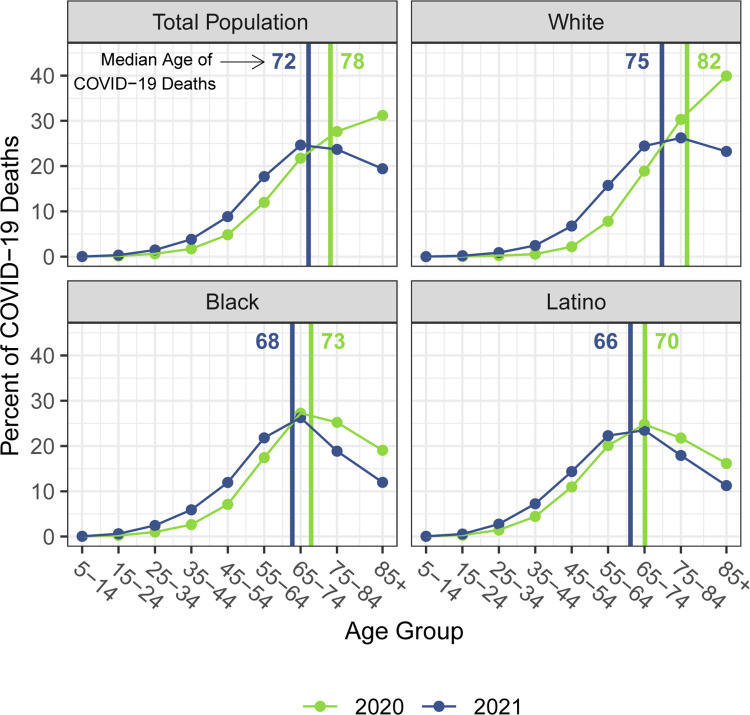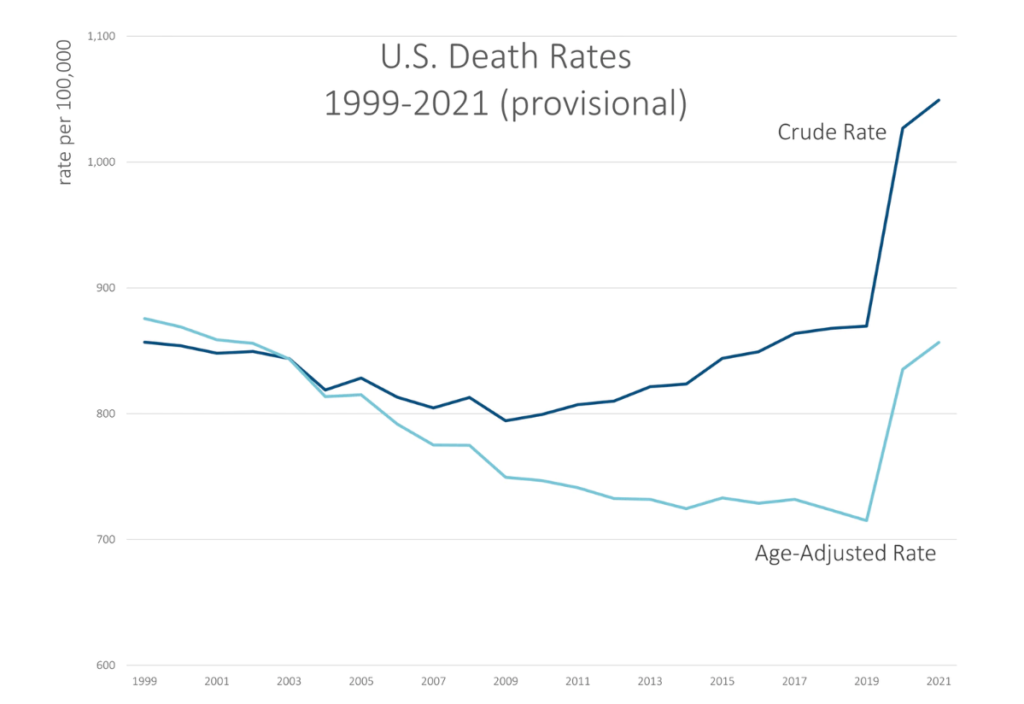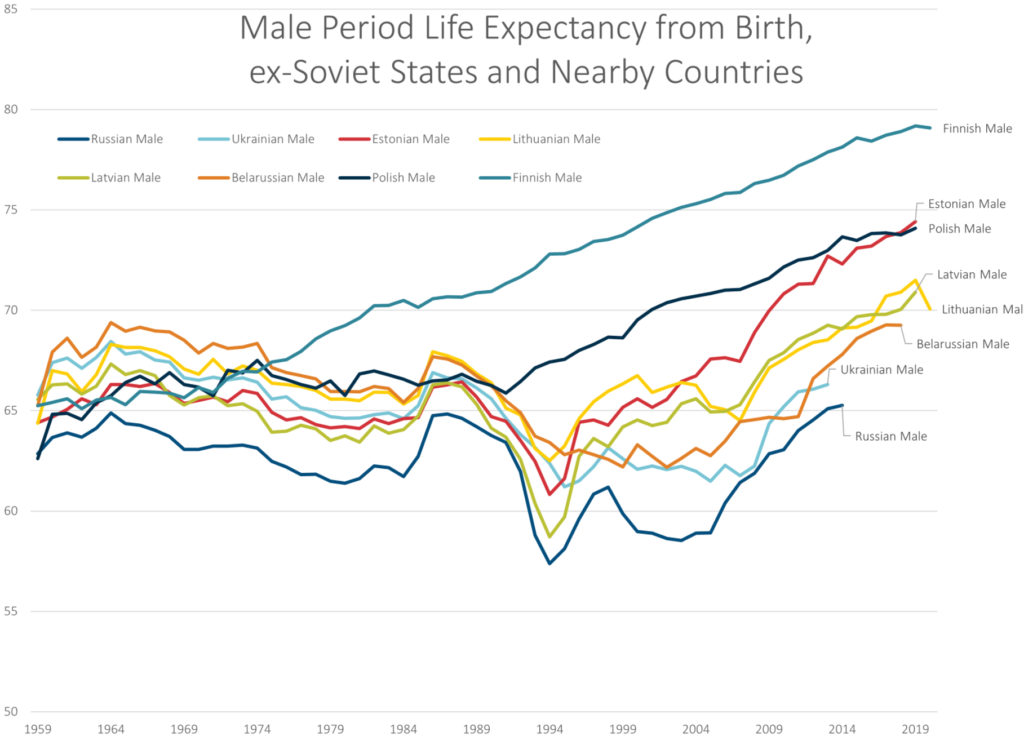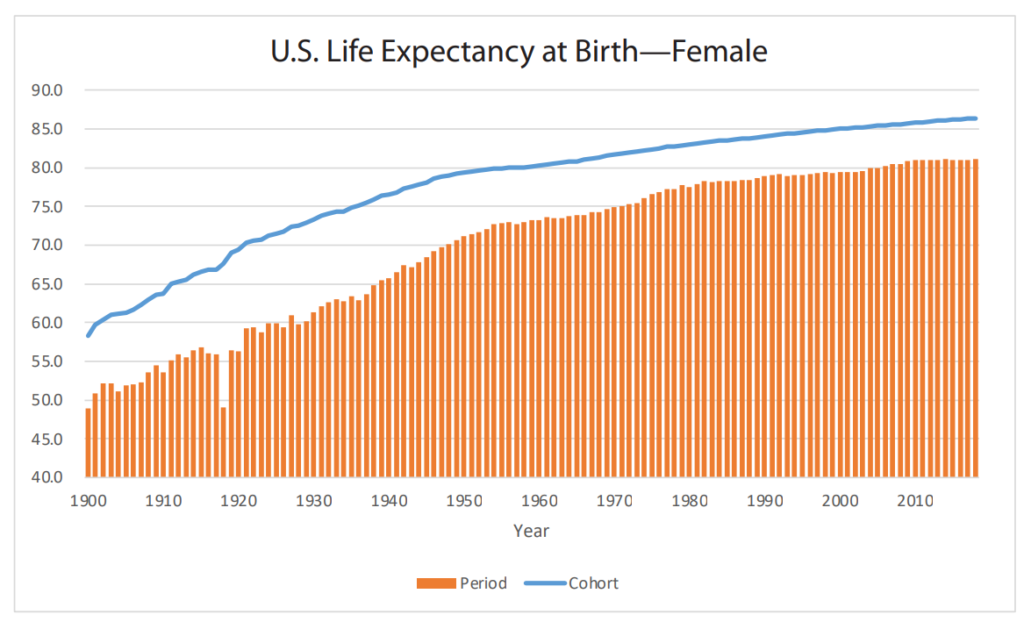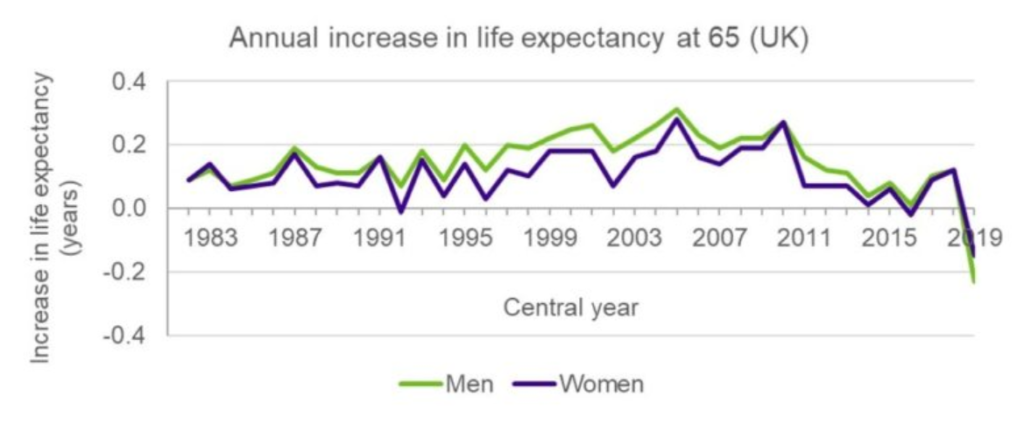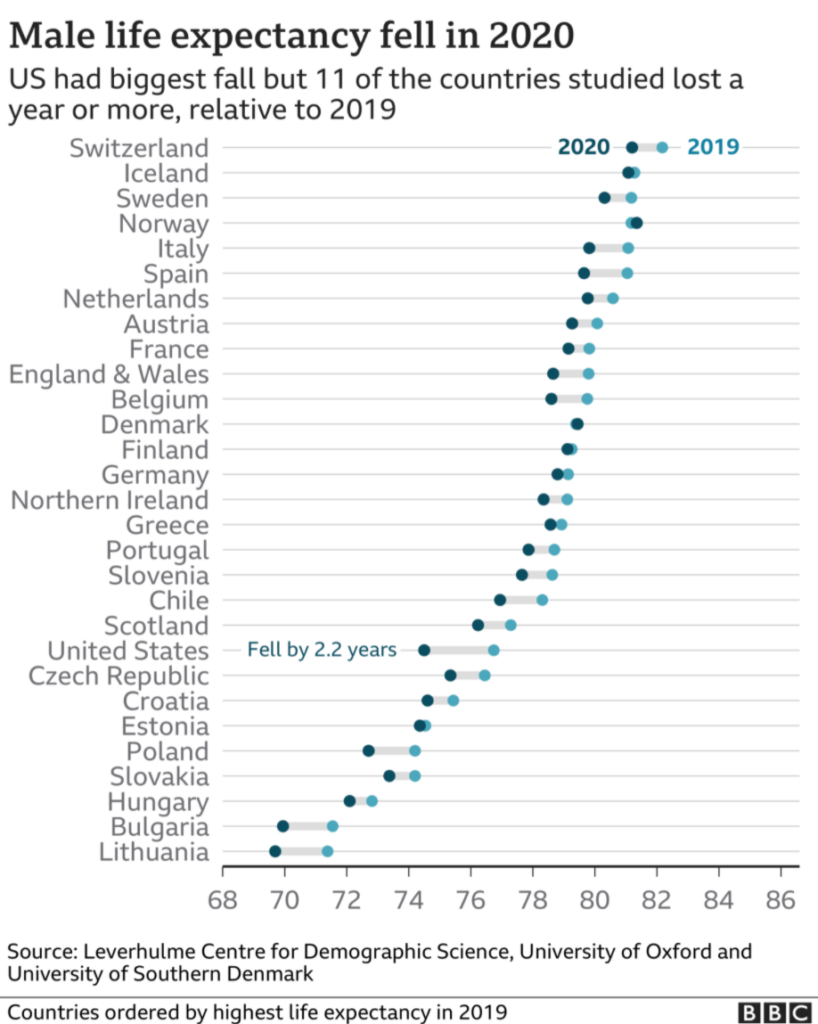Excerpt:
The average life expectancy fell for both Japanese men and women for the second consecutive year in 2022, a health ministry survey showed Friday.
The average life expectancy last declined for both sexes two years in a row in 2010 and 2011.
In 2022, the average life expectancy for men fell 0.42 years from 2021 to 81.05 years, and that for women dropped 0.49 years to 87.09 years. The drops were “largely due to the COVID-19 pandemic,” a ministry official said.
According to the ministry, the reported number of people who died after getting infected with the coronavirus rose to 47,635 in 2022 from 16,766 in 2021.
The pandemic is seen to have shortened the average life expectancy in 2022 by 0.12 years for men and 0.13 years for women, larger than 0.10 years and 0.07 years, respectively, in 2021.
….
In 2022, Japanese women had the highest average life expectancy in the world.
Japanese men ranked fourth, down by one place from the preceding year. Switzerland ranked first, followed by Sweden and Australia.
Of Japanese men born in 2022, 75.3% are expected to live until 75, 25.5% until 90 and 8.7% until 95. The proportion of Japanese women who are expected to live until 75, 90 and 95 stands at 87.9%, 49.8% and 25%, respectively.
Publication Date: 28 July 2023
Publication Site: The Japan Times

